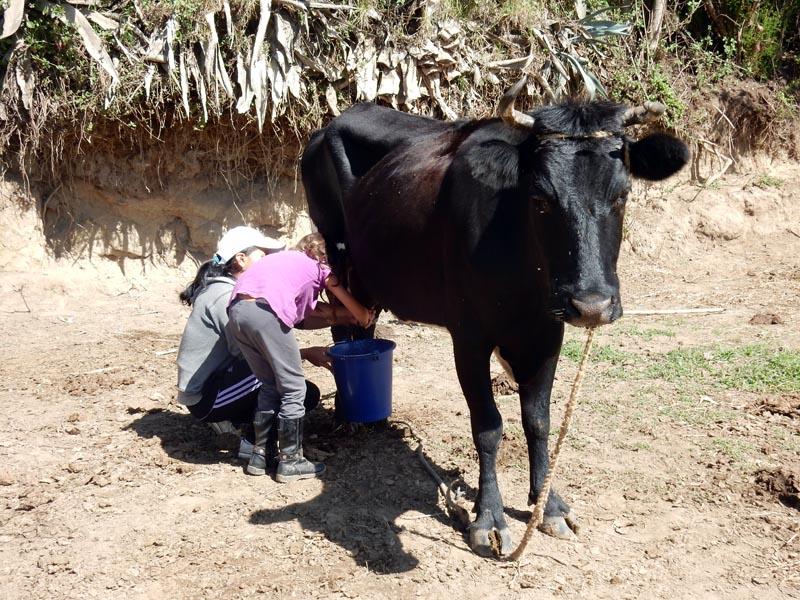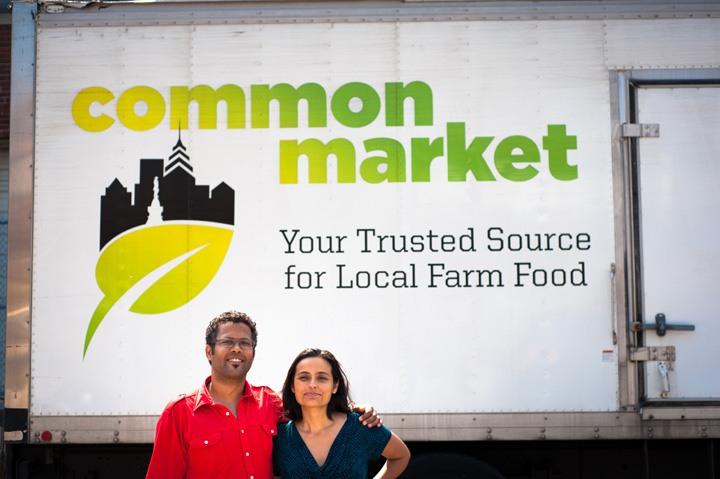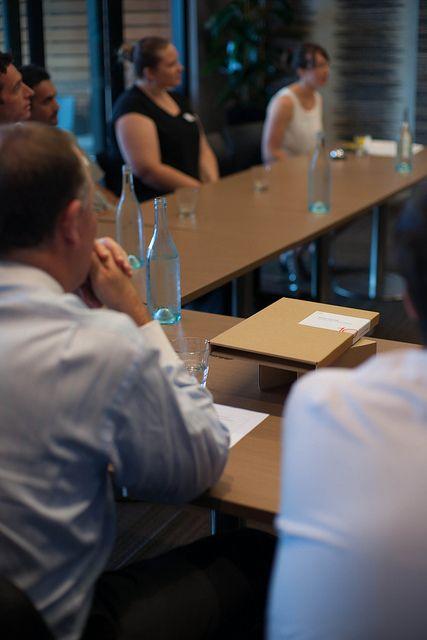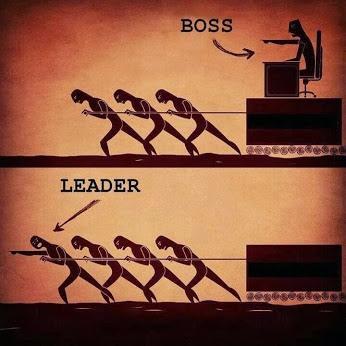Elon Musk's Next Business Venture: Home Energy Storage


How do you keep your 100-percent-solar-powered home’s lights burning bright at night? How do you maintain electricity during a power outage or natural disaster? The answer: home energy storage devices, which represent a growing market for utilities looking to balance the supply and demand of electricity, as well as consumers that want to get the most out of their renewable energy systems.
And now Tesla, the automaker famous for its all-electric Model S sedan, wants to get in on the action. In an earnings call last week, CEO Elon Musk announced that the company will soon unveil a consumer lithium-ion battery that can be used to store energy in homes or businesses, according to Green Car Reports.
Musk noted that the battery pack’s design is complete and that he was pleased with the result. The Palo Alto, California-based company will start production on the consumer battery in about six months, he said.
It was only a few sentences during last week’s conference call, but Musk’s comments set business media abuzz. Green Car Reports confirmed with Tesla’s director of global communications, Khobi Brooklyn, that the luxury electric vehicle maker will soon formally announce its new product.
Releasing a consumer battery pack is almost a no-brainer for Tesla: The Silicon Valley company already manufactures residential battery systems for customers of SolarCity, the solar installer that names Musk as its chairman and largest shareholder.
Speculation that Tesla would delve deeper into consumer energy storage began last year when the media uncovered documents filed with the Securities and Exchange Commission indicating the company planned to produce lithium-ion batteries for “stationary storage applications” – in addition to batteries for its luxury vehicles – at its new “Gigafactory.”
Then, in an earnings call last May, Musk spoke about the company’s plans to build a battery system for homes, rather than just cars, Forbes reported.
“We are trying to figure out what would be a cool stationary (battery) pack,” Musk said in the call. “Some will be like the Model S pack: something flat, 5 inches off the wall, wall mounted, with a beautiful cover, an integrated bi-directional inverter, and plug and play.”
In addition to serving as a back-up power system during an electrical outage, an energy storage device for a home or business can reduce peak-use charges on utility bills. Many utilities charge more for electricity used during times of “peak” energy demand – usually in the afternoon. Consumers with their own energy storage system can draw power from the battery, instead of the grid, during these expensive peak-demand hours, and then recharge the battery during off-peak times, when the electrical rates are lower.
While the global residential energy storage market has lagged in recent years – mainly because of its close ties to the volatile solar market – the sector is poised to expand by 90 percent this year, according to research firm IHS. As the solar industry booms, lithium-ion battery prices drop and homeowners become more interested in going off the grid, IHS predicts that the home energy storage market, coupled with solar installations, will reach more than 900 megawatts in 2018, up from just 90 megawatts last year. And Tesla and Elon Musk, as always, will be right there on the cutting edge of a burgeoning technology.
Image credit: Tesla Motors
Passionate about both writing and sustainability, Alexis Petru is freelance journalist and communications consultant based in the San Francisco Bay Area whose work has appeared on Earth911, Huffington Post and Patch.com. Prior to working as a writer, she coordinated environmental programs for Bay Area cities and counties. Connect with Alexis on Twitter at @alexispetru
GM Adds Wind Energy to Power Factories in Mexico


Yesterday General Motors (GM) announced it will add wind power to its energy portfolio for the first time in the history of the company. The construction of the 34 megawatt wind farm in Palo Alto, 325 miles (526 km) from Mexico City, will begin during the second quarter of this year.
When complete, 75 percent of the wind farm’s energy will power GM’s 104 acre factory and plant facilities in Toluca, an hour’s drive west of Mexico City. The wind energy will also provide some electricity for other GM plants in Silao, San Luis Petosi and Ramos Arizpe. Enel Green Power, the US$2.3 billion dollar renewable energy company based in Italy, has designed and will build the plant as directed in a purchase power agreement signed with GM.
According to GM, the Palo Alto wind farm will increase the amount of its energy derived from renewables to 12 percent from its current nine percent. GM claims that its facilities in Mexico benefiting from the new source of wind power will avoid the emissions of 40,000 tons of carbon dioxide annually. The project will also help GM meet its 2020 renewable energy goals four years early: the company set a target for 125 MW of clean energy by 2020—before the Palo Alto plant is switched on, GM’s total renewables portfolio currently stands at about 104 MW.
But in addition to its improved environmental credentials, GM will score a long term financial benefit. In an email to Triple Pundit, a GM communications representative explained that the company expects to save about US$2 million annually once the Palo Alto wind farm operates at full capacity. Electricity costs are often a thorn in the side of manufacturers conducting business in Mexico. Despite its substantial oil reserves, Reuters has estimated that Mexico has the eighth-most expensive electricity prices within the 34-nation Organization for Economic Cooperation and Development (OECD). The nation’s federal government has grappled with a controversial energy reform program, and while some changes have been made, they have not helped with energy costs. GM says conventional power prices in Mexico are one-third higher than they are north of the border in the U.S. So even with the current low prices of oil, GM’s investment in this wind farm makes financial sense.
GM has been working on the Palo Alto wind farm plant since April 2014. When asked if this was a sign whether the company will green-light more renewable energy projects in the near future, GM representatives were noncommittal, but said it is always on the lookout for ways to diversify its energy portfolio. Meanwhile, the company has slowly made progress: organizations including CDP have given the automaker high scores for its climate change data disclosures.
Based in California, Leon Kaye has also been featured in The Guardian, Clean Technica, Sustainable Brands, Earth911, Inhabitat, Architect Magazine and Wired.com. He shares his thoughts on his own site, GreenGoPost.com. Follow him on Twitter and Instagram.
Image credits: GM
Lead and Cadmium Found in Popular Chocolate Candies


There’s just nothing like a bar of chocolate. As a consummate and passionate chocolate lover, I am dismayed to learn that I might be ingesting lead and cadmium when I eat a chocolate bar.
The nonprofit foundation As You Sow tested 42 chocolate products for lead and cadmium, and found that 26 of them (62 percent) have lead and/or cadmium in levels that violate California’s Proposition 65 law. Under Proposition 65, companies are required to warn consumers about significant amounts of chemicals present in the products they buy. Proposition 65 also requires the state to publish a list of chemicals known to cause cancer, birth defects or other reproductive harm. Both lead and cadmium are on the list.
As You Sow filed notices of legal action with 16 manufacturers for not providing the required warnings that their chocolate products contain lead, cadmium or both. The companies include Hershey, See’s Candies, Mars and Godiva. The reason As You Sow filed the legal notices is because “consumers need to know that chocolate may contain heavy metals,” Eleanne van Vliet, As You Sow’s toxic chemical research director, said in a statement.
The potential exposure of lead from chocolate is particularly troubling when it comes to children: There is not a safe level of lead for children. Lead exposure is associated with neurological damage, including learning disabilities and lower IQ, and can occur even with low levels of exposure. Or as Sean Palfrey, M.D., said: “No amount of lead ingestion is ‘safe’ for children.” Palfrey cautions that pregnant women should also avoid “any ingestion of lead.”
Cadmium ingestion should also be avoided by pregnant women and children. Chronic cadmium exposure has been associated with kidney, liver and bone damage. Children are more susceptible to chronic low levels of cadmium exposure.
“Nobody expects heavy metals in their chocolate,” said Andrew Behar, CEO of As You Sow. “By issuing these notices, we hope to convince chocolate manufacturers to either remove or reduce heavy metals in their products through sound supply chain practices, or provide warnings so consumers can make their own choices about whether to consume the products.”
Hershey responded to the study in an email to the Washington Post and downplayed the lead and cadmium in its products, the paper reported last week. “All Hershey products meet all FDA and state standards, and our cocoa powder and chocolate are safe to eat,” stated Jeff Beckman, director of corporate communications for Hershey. “This includes the very strict Proposition 65 standards for lead and cadmium in candy and other products.” However, van Vliet said the levels are not low.
While some may argue that the contamination of chocolate from lead and cadmium is naturally occurring and comes from the soil that cocoa is grown in, a 2005 study by University of California, Santa Cruz researchers found otherwise. The researchers looked at lead concentrations in cocoa beans and found they had levels so low that they were “one of the lowest reported values for a natural food.” However, when they looked at manufactured cocoa and chocolate products, they found lead contamination levels “among the highest reported for all foods.” They concluded that the lead contamination occurred either during manufacturing or during the shipping and processing of the cocoa beans.
Clearly, chocolate manufacturers need to at least comply with California law and warn all of us chocolate lovers product ingredients. It would be even better if they found the source of the lead and cadmium contamination and took steps to stop it.
Image credit: Aka
Visiting the Indigenous Ecuadorian Highlands


During our ecotourism adventure in Ecuador, my family found ourselves in the highlands of the Andes, along the slopes of the now dormant Cotacachi Volcano. This area around Otavalo, Ecuador is dotted with adobe villages with large indigenous populations, where the Kichwa language and traditional dress are widespread. Oven-baked adobe bricks, elders carrying firewood through the countryside barefoot and large family gardens abound.
In recent decades, however, many people have left the area to seek educational and employment opportunities -- resulting in greater wealth but also a loss in cultural heritage. Use of the Kichwa language is in decline, as many young people do not learn the language.
Runa Tupari is a community-based tourism agency with a vision for creating economic opportunities in these rural indigenous communities, while celebrating the local indigenous cultures in a respectful cultural exchange. The organization is creating economic opportunities in the community that help affirm this sustainable way of life, where homegrown native foods, community bonds that span generations and a vibrant culture can thrive.
One of the best ways to get to know local culture is by staying with a local family. During our trip, my family of four (with two young children) booked a homestay with an indigenous family in the mountain town of Tunibamba, outside the village of Cotacachi. The home is called Loma Wasi, or "house on a hill" in Kichwa.
The host family of Mario and Mercedes were surprisingly warm and welcoming, inviting us to participate in their daily activities. During our first morning in the village, my two children milked a cow, watched the birth of seven piglets and sampled many foods from the family's garden.
Their yard is overflowing with local native crops, with a variety of shapes, colors and flavors. This stunning agro-biodiversity helps with food and economic security, as the family is less dependent on each crop if it were to fail. Many of these foods are not sold in the stores and markets, so the best way to sample them is by staying with a family.
"We grow the majority of our own food, with natural fertilizers and without the use of chemicals," Mario explained as he weeded a patch of potatoes. "We often trade the foods we grown for foods we may want from other growers."
Mercedes frequents the local farmer's market in Cotacachi on Sunday mornings, where locals bring their homegrown harvests. What isn't sold is often traded for different foods. This is where the agro-diversity is apparent, as numerous varieties of tubers (some with medicinal properties), corn, fruits and vegetables are on display. Many food crops have originated from this area, including, potato, quinoa, beans, blackberries, avocado and white carrots.
It is choclo season now, so many of our meals contained this variety of Andean corn with large kernels. We ate humitas (corn tamales) and creamed soup with slices of choclo on the cob. Local families cook the corn over firewood in large pots, making an event out of cooking the humitas.
Mario told us many stories about the use of medicinal plants to cure common ailments, such as cancer, asthma and kidney ailments. Armed with a machete to clear a path, he brought us to a clearing in the hilltop forest where sacred ceremonies are held. This forest is owned by the community (not privately), after a local hacienda closed and the land was partitioned off.
"Offering homestays creates a rich cultural experience, where travelers can learn about our way of life," said Rolando, Mario's and Mercedes' son. "It also allows my mother to work from home, instead of having to travel long distances to find work."
Agriculture has traditionally been a large source of employment in the area, although many young people are losing interest in the profession. Many seek employment in other cities.
The tourism industry has also encouraged the talented Andean handicrafts and provided an important source of income.
My daughter and I picked blackberries with a neighbor, where we were introduced to her mother. "She only speaks Kichwa," explained the neighbor. I asked why she didn't learn Spanish while she was in school. Mario explained to me that bilingual education (with Spanish and Kichwa) is a new phenomenon in certain parts of Ecuador. Until recently the schools were conducted exclusively in Spanish. "She never attended school," the neighbor explains. "It wasn't considered important when she was younger."
I also asked the neighbor how far back her family has lived in Tunibamba. "We have lived here forever," she said confidently.
Image credit: Kiril Lozanov and Sarah Lozanova
Sarah Lozanova is a regular contributor to environmental and energy publications and websites, including Mother Earth Living, Green Builder, Home Power, and Urban Farm. Her experience includes work with small-scale solar energy installations and utility-scale wind farms. She earned an MBA in sustainable management from the Presidio Graduate School and she resides in Belfast Cohousing & Ecovillage in Midcoast Maine with her husband and two children.
Growth Financing for Social Enterprises: 5 Options and How to Make Them Work for You


By Don Shaffer
Social entrepreneurs seeking growth funding often get caught up in the culture of venture capital: They position their enterprise as a rocket business, look for a miracle angel investor and start giving away equity. They’re not thinking about how the investors will get their money back, or whether other options might better support their goals.
At the same time, conventional funders often see social enterprises as too risky or too hard to understand, especially if they’re building a new supply chain, sacrificing some profit to maximize social value or using a hybrid business model.
Fortunately, there are ways around traps and barriers like these for social enterprises that are past the bootstrapping stage. First, here are a few general guidelines:
- Before you seek financing, define what you ultimately want to do. Are you planning to sell this business? Do you see it as a legacy business that you’re building to last? A long-term, slow-growth plan won’t nix your chances for funding; you’ll just need to look at different kinds of funding.
- Seek out funders that focus on social enterprises and that have expertise in your field. They’ll have a better understanding of the market opportunity, and they won’t expect your business to compromise its mission in order to grow.
- Expect a funder to add value beyond financing, such as connections to a network of advisors or technical assistance.
Below are the ins and outs of five funding options — some top of mind, and some you may not have considered.
1. Debt financing
Borrowing money over a defined period of time — from a bank or an alternative lending institution — allows you to maintain your ownership position and thus retain control of the enterprise. This is a good option for enterprises that have the cash flow to make payments and the assets to secure the debt.
Debt financing takes a variety of forms, each with its own underwriting standards: working capital lines of credit, asset-based loans (secured by account receivables, inventory and other assets), equipment loans, mortgages and so on. You will want to seek advice on the best structure. The key questions to ask at the outset are: How will I be able to pay back the loan, and what is the lender likely to do if things go sideways?
2. Equity investment
Selling an ownership interest in a business is often the only option for enterprises that have promise but lack the cash flow to service debt or the assets to secure a loan. When adding equity investors, it’s especially important to consider what they bring to the table beyond money, since they will be co-owners of the business.
Key questions are: How will investors earn a return? What return do they expect, and in what time frame? Be sure that their expectations match yours. How strong is their alignment with your mission — and will they support decisions that privilege the mission over other values, such as profit and rapid growth? What kind of partner will they be in difficult times?
3. Program-related investment
Foundations provide program-related investment (PRI) financing to support mission-related enterprises while maintaining their principal and possibly earning some profit. PRI funders tend to have greater risk tolerance than conventional funders and offer low interest rates — but they have several downsides.
PRI funders are hard to find, and they fund in narrow areas. RSF, for example, offers PRI loans only in its food and agriculture focus area, and foundations stick to projects that are related to their mission. Foundations tend to move slowly, so you won’t get the money right away, and they may have cumbersome reporting requirements. Also, many for-profit social enterprises won’t qualify for PRI funding — you must show that the public benefit outweighs the private benefit, or be seeking funding for a charitable program or project.
Key questions: Given the amount of work required to obtain and maintain PRI financing, would you be better off pursuing a grant or equity? What is the loan going to allow you to do, and do you have the cash flow to make payments?
4. Direct public offerings
A direct-public offering (DPO) is an investment opportunity offered to the public directly, without an investment bank and without minimum asset requirements for investors. The offering can be equity shares, debt financing, revenue shares or other types of investment.
DPOs can be an effective and flexible way to tap your community for capital. They work best for companies that have a broad and defined constituency in a particular geographic location. They’re not a great option for raising a modest amount of money — the time and cost involved in state registration varies, but it can be significant (especially if you need to register in more than one state). At the same time, some states cap the funds you can raise at $1 million, so you may not be able to raise enough money through a DPO.
If you’re interested in pursuing this route, take a hard look at your community support — are enough people willing to invest? Also make sure you know all the applicable state regulations and fees before you start the process.
5. Integrated capital
Integrated capital is the coordinated use of different forms of capital (equity investments, loans, gifts, loan guarantees and so on), often from different funders, to support a developing enterprise that’s working to solve complex social and environmental problems. At RSF Social Finance, we’re reorienting our entire operation around this strategy.
Integrated capital is ideal for enterprises that are breaking fresh ground and need patient capital. It allows for longer development times by including some types of investment that don’t need to produce a return, such as grants. It gets enterprises through the “valley of death” — that difficult area where they have a promising business model, technology, product or service, but need more capital to realize their potential and don’t qualify for traditional financing. And when community foundations and local investors participate, integrated capital creates a community commitment to the enterprise’s success.
What does this look like in practice? Common Market, which provides a distribution link between threatened Delaware Valley farms and urban communities that lack access to fresh foods, has grown rapidly through a series of integrated capital financings, the most recent one enabling purchase of a $1.67 million warehouse space that significantly increased its capacity. At the time (2012), Common Market was not large enough to support the mortgage loan, but RSF was able to fund it with the backing of $350,000 in pledge contributions (which can be called upon in case of default) from the W.K. Kellogg Foundation, the Claneil Foundation and the 11th Hour Project; a $35,000 guarantee from the Common Market community placed as an investment in the RSF Social Investment Fund; a $250,000 RSF Local Initiatives Fund guarantee; and a $100,000 Local Initiatives Fund grant.
Parting advice: How to avoid fundraising frustration
Obtaining any of the forms of financing above requires proof that you can grow: You have a business strategy you can execute; you’ve demonstrated that there is market demand for what you do; your model is bringing in revenue; and you have sophisticated financial reporting and controls. By itself, a compelling mission is not enough.
If you’re not sure where you fit in or what you need to show to gain the support of investors so you can move beyond bootstrapping, ask funders for advice. People love to give advice. But, as in dating, don’t act desperate. If you’re pretending to earnestly want advice while you’re really just brazenly pitching everyone you meet, people will see through that.
Finally, you will have a relationship with your funders — possibly a very intense one. Take the time to get to know them (their interests, where their money comes from, their experience with other social enterprises) before you move forward. Times will get tough — are they the ones you want in the boat with you?
Image courtesy of RSF Social Finance
Don Shaffer is the president and CEO of RSF Social Finance, a San Francisco–based organization that lends money to path-breaking social enterprises, provides impact investing vehicles accessible to a wide range of investors, manages grant funds, and works to build a finance infrastructure that will allow social enterprises to thrive. RSF is currently seeking the next 25 social enterprise stars—go here for details.
In the Scheme of Things: What the 'War on Drugs' Can Teach Us About Keystone XL


By Joe Madden
Like every other American with media access, I have no choice but to acknowledge the Keystone XL “debate." It is everywhere … and it has spurred impassioned pleas from environmentalists, patriotic calls to duty from conservatives and even one of Jon Stewart’s more exhaustive rants.
Now a bill authorizing the completion of the pipeline is poised to pass both houses and is awaiting a likely veto from President Barack Obama. Opponents argue that the pipeline will not add to U.S. energy independence and that it will contribute to climate change and a multitude of other negative environmental and social outcomes. Transcanada, the company seeking rights to build the pipeline, says: “Keystone XL Pipeline will be the safest and most advanced oil pipeline operation in North America. It will not only bring essential infrastructure to North American oil producers, but it will also provide jobs, long-term energy independence and an economic boost to Americans.”
Regardless of where one stands on the issue, the focus of the current debate is misplaced.
We don’t have a “supply problem” when it comes to fossil fuels in the U.S. or anywhere else. We have a “demand problem." Whether Keystone XL is approved and extended or not is irrelevant in the scheme of things. As long as there is market demand for the oil contained in Canadian tar sands, it will be extracted, refined, find its way to market — (via rail, alternate pipeline, etc.) and be burned. Climate change, environmental destruction caused from extraction and/or any other consideration will not prevent this from happening.
Moral and ethical arguments are no match for market demand -- especially inelastic market demand.
The “War on Drugs," which began 44 years ago with a proclamation from then President Richard Nixon, provides a consistent and enduring example of this simple truth. It is unlikely that many folks would argue for the long-term benefits of heroin, cocaine, crack or crystal meth use on an individual or societal level. But a multitude of studies and market data suggest that the drug trade is and has been “alive and well” in spite of the Herculean efforts to quell supply for more than four decades. It has even been suggested that any temporary disruptions in supply drive price up and encourage new market entrants on the supply side -- demand begets supply.
Drug trafficking declines only when demand declines.
Like a sobering addict coming off a binge, it's high-time for our global citizenry –including those chomping at the bit to cash-in on the economic spoils contained in the bitumen of Alberta -- to assess KXL from the demand side of the equation.
Scientists say we have a “carbon budget” of approximately 565 GtCO2e (billion tons of carbon dioxide equivalent greenhouse gases) that we can emit by 2050 if we are to have a fighting chance of staying within 2 degrees of temperature rise to avoid “dangerous climate change." Proven fossil fuel reserves total 2,975 GtCO2e — five times our “budget." So, like heroin, cocaine or meth — all of which can be generated (grown, “cooked," etc.) on an ongoing basis -- supply is not the issue.
At current rates, we will exceed our carbon budget between 2030 and 2035. That date is close. My 7-year-old son and 6-month-old daughter will only be 28 and 21 respectively in 2035.
The only way to avoid dire consequences is to drastically increase resource efficiency with regards to greenhouse gas (GHG) output.
This means economizing ... and making smart choices in accordance with our carbon budget. Acknowledging that all fossil fuels are not created equal is a first step. From a carbon perspective, six saleable barrels of tar sands oil equates to roughly seven saleable barrels of oil extracted from conventional means. Thus, when GHG impact is included, tar sands oil looks far more costly (read “INVESTMENT RISK”) than conventional crude.
Forget altruism, ethics and the like ... For the folks calculating the spoils of tar sands development based on demand projections that have yet to be correlated with carbon constraints, it might be time to revisit demand assumptions that include global carbon constraints prior to sinking additional capital into activities associated with their development.
Drug addicts do not have the benefit of adjusting demand based on a budget that defines consequences of future drug use, nor do drug lords receive such data to assess future demand curves.
In the case of tar sands oil, both the “addict” and the “pusher” have the information to make informed choices.
Image credit: Emma Cassidy
Based in San Francisco, Joe Madden sits on the Board of Directors at EOS Climate.
Save a Seat: Make Room for Millennials at the Investment Table


By Chat Reynders and Patrick McVeigh
As millennials come of age in the business and financial landscape, they are approaching the terrain with a unique, evolved mentality. Today, the world’s first socially-networked generation is demonstrating they are also the world’s purest generation of socially responsible investors.
In contrast to what we’ve seen with baby boomers, millennials often approach investing with a social mindset. They recognize the need to generate returns, but they are just as concerned with the value and impact their investments can make. In fact, a 2013 study by Spectrem Group found that “45 percent of wealthy millennials want to use their wealth to help others and consider social responsibility a factor when making investment decisions.”
This creates a fascinating social investing opportunity and is reflective of a sea-change from previous decades. For this generation, the traditional goal of maximizing returns has taken a seat next to goals with deeper meaning.
For millennials who are ready to embark on a sophisticated investment strategy, there are a few ways to maximize social impact while generating sound financial returns:
1. Invest in industries that prioritize positive change
Millennials are wisely attracted to investments that make a positive impact on a sustainable lifestyle – food production, mobility and clean energy, for starters. Because this generation has seen businesses and companies have great success initiating change, they are drawn to management teams that guide their growth with a social compass. In fact, a Merrill Lynch/Deloitte study recently found that more than half of millennials “believe that business, not government, will have the greatest impact in solving society’s most pressing challenges.”
This statistic demonstrates a new willingness from millennials to put their faith in businesses -- and recycle their capital into industries and corporations they believe in.
By investing in positive change fueled by fundamentally sound companies, millennials may well bridge the gap for skeptical investors who believe social impact requires sacrificing returns. It is our belief that social investing, done correctly, is proving to be sound investing – a reality that aligns with many millennials’ sensibilities.
2. Don’t let your investment decisions be greenwashed
Not all social change fueled by corporations merits investment, of course. A constant flow of news reports on initiatives taken up in the name of the environment have flooded the media, but in reality there are plenty of companies that are laden with “green” facades built in the name of marketing.
Stable social change must be part of a long-term plan supported by management goals or the overarching business model. Companies that are genuine in their social profile will be ethically run, transparent about their operations, and built on solid financials that allow them to thrive. After all, a poorly run or financially unstable organization will not be around long enough to make an impact – or to reward investors.
When choosing a place to invest, make sure the company meets the above criterion to maximize opportunity for true long term value.
There are two companies that consistently meet the profile of a millennials’ potential investment checklist. Both companies, in fact, focus on healthy, GMO-free food and have maintained growth among the generation due to their commitment to transparency.
SunOpta, a leader in creating non-GMO grain supplies, appeals to millennials’ desire to eat foods that are healthy and know where and how they’re sourced. Similarly, Sprouts Farmers Markets is dedicated to enabling consumers to eat well without astronomical up-charges. The grocery store values responsible sourcing, reducing waste and reducing energy use -- all pillars of sustainable business practices.
At Reynders, McVeigh Capital Management, we are seeing the above companies as leaders primed to capture the next generations’ investment dollars.
3. “Community and impact investing” are the new “fixed income”
Traditional fixed income isn’t what it used to be, and millennials are catching on. There is a silver lining, though: With interest rates lingering at all-time lows, investors are discovering they can find the same low-risk, low-yield results by placing their assets in community investing and impact investing.
 Community Development Financial Institutions (CDFIs), for example, have a track record of providing community-based businesses and low-income individuals with access to credit, equity and capital. Fundamentally sound programs can provide consistent returns, lower default risks and direct community benefits. Investors can earn interest on three- or five-year notes while putting their money to work in their own backyards.
Since the early 1980s, the investment world was largely driven by the chase for pure profit and fast growth. Multiple economic downturns, global connectivity and an emphasis on social change created a new investing environment that this generation is ready to tackle head-on. Millennials are now in an excellent position, with the chance both to shape the landscape and to be empowered by it for decades to come.
Chat Reynders, Chairman and Chief Executive Officer of Reynders, McVeigh Capital Management LLC., has more than 25 years of experience in investment management and social venture investing. He has structured and funded public/private partnerships that have brought more than $150 million in revenues to leading cultural institutions. He has for decades produced socially oriented IMAX films, including the Oscar-nominated Dolphins and Coral Reef Adventure.
Chat’s focus on climate change also led him to his role on the board of the One World One Ocean Foundation. He also serves on the board of directors of the Westminster Kennel Club, the Brookwood School, and on the Board of Advisors of Project Adventure.
Image credit: Flickr/Locus Research
Patrick McVeigh, President and Chief Investment Officer of Reynders, McVeigh Capital Management LLC., has more than 30 years of experience in socially responsible investing (SRI). He was an owner and key employee of one of the first SRI wealth management firms, and he served on the board of the Social Investment Forum. At SIF, he pioneered research on SRI, and he has authored articles on finance, ethics and ecology, and contributed to The Social Investment Almanac (New York: Henry Holt, 1992) and Working Capital: The Power of Labor’s Pensions (Cornell University Press, 2001).
Patrick managed one of the first community-owned natural food stores and recycling centers, and helped establish a ground-breaking community loan fund in Haiti. He currently serves on the board of the Waltham Fields Community Farm.
Is Charismatic Leadership Still Alive?


By Daryl Horney
A colleague and I were discussing charismatic leadership over lunch. Mind you, my colleague is in the early stages of writing her doctoral thesis on the subject, evidently a topic dear to her. She proposed two questions for me: "Does charismatic leadership create greater levels of performance amongst their followers? Is charismatic leadership still alive?" I was perplexed.
If I recall correctly, and attribute charismatic leadership to traditional leadership -- a trendy and hot topic of study that was popular during the late 1980s and into the 2000s -- then I would say, “Unfortunately, charismatic leadership is still being practiced in many organizations unfamiliar with the progression in leadership trends around them.”
The trend has certainly shifted from that traditional style of leadership toward a manifestation of what many authors and business leaders are referring to as, “leaderful leadership.”
One of the main shifts in focus is from the individual (traditional) leadership style to the collective (leaderful) leadership style. Avinoam Nowogrodski, CEO of project-management software at Clarizen, “attributes his company’s success to hiring the right people and leading democratically,” suggesting that all employees have a voice and can participate in the leadership process.
Another shift has been in the area of employee engagement -- a topic that is close to me academically and as a practitioner -- where the shift has altered from a controlling (traditional) stance to a collaborative (leaderful) approach. Chris White, who leads the Center for Positive Organizations at the University of Michigan explains: “By focusing on building relationships with your employees, you can discover their full capabilities while also providing them with a feeling of ownership over their work and a greater sense of well-being.”
A more expressive example is contrasting the dispassionate leader (traditional) to the compassionate leader (leaderful). Fred Keller, the CEO of Michigan-based plastics manufacturing company Cascade Engineering, started a program called, “Welfare to Career.” According to Keller, “The company brings aboard people who have been on government assistance for long periods.” It’s a program about giving people second chances. Keller doesn’t only provide jobs, but also provides careers. After the program began, “the culture changed; Cascades’s retention rates rose, as did employee satisfaction,” Keller said.
Now, back to the questions presented by my colleague. Do charismatic leaders affect their followers in a way that generates greater productivity?
Charismatic leadership can create a distance between its leader and its followers. When the leader and follower are in contact, this contact can be “superficial and mediated in nature” further suggesting that charismatic leadership has no real positive effect on followers.
Still, one can argue that charismatic leadership can produce high performance levels among followers, as was the case when Sir Ben Ainslie was credited for winning the America’s Cup in 2013 for his charismatic leadership. I believe it was a combination of Ainslie’s sailing skills and his collective leadership abilities that helped inspire and drive the American team to come back and seize a win over their challenger, New Zealand.
It is my opinion that charismatic leadership is slowly fading away like the flip phone. It’s not yet extinct but is being used less and less by management professionals. It’s being replaced by the new tenets of leaderful leadership: compassion, shared leadership, collective thought and collaboration. Charismatic leadership has been a temporary bandage effective only to boost morale and creativity for the short-term. It does nothing more than allow a person to create a powerful self imagine that facilitates a false perception, enabling them to gain a small flock of obedient followers (usually out of fear) and a large number of disgruntled employees.
Employees try to make sense of what their leaders envision. They do not depend on their leader's charisma to get them there. Their leader may inspire them, but they depend on their own actions and the actions of their colleagues.
Charisma is a great characteristic to have around. It may get employees motivated, provide extra energy and it may even make employees want to work extra hours. However, it’s the practice of compassion, shared leadership, collective thought and collaboration that creates greater levels of performance, inspires trust, promotes communication and engages employees.
Image credit: Flickr/Olivier Carré-Delisle
Daryl is responsible for strategy and business development activities for the U.S. market at Instinctif Partners, Engagement and Truth, a strategic marketing insight consultancy. In addition, Daryl is completing his Doctorate in Business Administration concentrating in Change Management and Organizational Behavior at the University of Liverpool.
Pharma companies failing to abide by 'the rules' in UK and Sweden


Unethical marketing of pharmaceutical drugs happens more than once a week in both the UK and Sweden, according to a new report from Lund University.
The study, published in the journal PLOS Medicine, investigated judgments from the self-regulation bodies in the UK and Sweden over the years 2004 to 2012. The study revealed 597 and 536 cases respectively of marketing that violated the industry’s own regulations.
Over half of cases related to misleading marketing. For instance, claims made about drugs were found to lack medical evidence. In other cases, the violation concerned marketing of prescription medications, which is prohibited in the EU.
In 20% of cases, the violation of the regulations was judged to be severe.
“There is clearly a discrepancy between the ethical rules and what companies are actually doing”, said Shai Mulinari, a researcher in both social sciences and medicine who led the study.
Unethical advertising does lead to fines, but the sums are very low in proportion to the pharmaceutical industry’s revenue: 0.01% of annual sales in Sweden and 0.005% in the UK.
Dr Mulinari believes that higher fines and more publicity of the judgments could serve as an incentive to the pharmaceutical industry to improve its behaviour.
The Rise of Sustainable Fibers in the Fashion Industry


Listen to the generations before us, and our elders will tell us how instead of a walk-in closet full of clothes, they had a tiny crevice in their room, or a wardrobe, where they stored a few garments: One nice coat, maybe a handful of shirts, and a couple of pairs of trousers were the norm for men, for example. Clothes were not always washed, but often brushed to keep clean, and shoes were polished daily. Fast forward to today, and fast fashion is all the rage. It is common to have several colors of the same shirt or pants, and many consumers do not think twice about discarding a garment — not to Goodwill or charity, but literally into the trash can — after a few wears.
Finally, the fashion industry realizes we cannot continue this trend in a world where the rising population will have to devote more land to food — or even energy. We cannot continue to grow cotton like mad, nor can we endlessly spin fossil fuels into polyester or other synthetic fabrics. The road toward more sustainable fibers will be a long one with plenty of failures and misses, but it is one we need to take. That is, at least, absent a total rethink of how many clothes we really need in our closets -- a discussion the large global clothing chains want to avoid.
To skirt that problem, more clothing companies are focusing on sustainable fiber. Levi Strauss, for example, has modernized and transformed its brand in part by emphasizing sustainability in everything from its garments’ origins to long after the sale. The company has spun recycled plastic bottles into its iconic denim jeans and has worked with other countries to launch the Better Cotton Initiative.
While there's still plenty to be done, the use of sustainable fibers is on the rise. Read on to learn more about how five textiles are shaping sustainability in the fashion industry.
Cotton
Even if more companies move toward sustainably-grown and responsibly-sourced cotton, this crop will always have a massive water footprint. Cotton will always be coveted because of its strength, comfort and breathability, so some companies are experimenting with blending other fibers with cotton to lessen the footprint of the final garment. California-based Synergy, for example, offers organic cotton blends that include hemp and bamboo. And advocates for more sustainable garment production often tout the latter two as plant fibers that can be used in textiles with a smaller environmental footprint.
Hemp
Hemp often scores points for its durability and rapid growth without excessive use of water and pesticides. It does not dye as well as cotton, and not everyone appreciates its linen-like and sometimes scratchy feel. But manufacturers, including Colorado-based EnviroTextiles, are introducing more updated textures that look like denim or wool. For hemp to scale, however, U.S. laws that have put a stranglehold on hemp production need to be relaxed. That could be a reality soon: In Maine, for example, the state legislature is considering two bills that will lift restrictions on the industrial production of hemp.
Bamboo
Meanwhile, bamboo’s stock as a “sustainable” fiber has fallen. Several years ago, the miracle grass was touted for its environmental chops. But it turned out that the fibers spun from bamboo require so many solvents that it is virtually indistinguishable from rayon or viscose. Many journalists and bloggers began to raise red flags, and complaints with the U.S. Federal Trade Commission concluded with several retailers settling with the regulatory agency. Other materials such as stinging nettle and tencel (from harvested trees) have gained interest, but the ecological impact of their processing and concerns about scalability come into question.
Synthetics
When it comes to scale, synthetic fabrics are showing more promise. The era of more collaboration and less patent litigation, at least when it comes to developing more ecologically friendly textiles, offers hope. Some of this change is due to companies like Nike with its sustainability index, which boosts the sharing of ideas and innovation.
But with the size of the global textile industry, and increased awareness about its massive and oft-destructive impact, an emphasis on improved textile recycling technology will be crucial if the garment industry will truly become more sustainable. More closed-loop systems will be needed — as of now what few exist are in their infancy.
Recycled fibers
The changes are starting at the base of the supply chain with companies such as Aquafil, a synthetic fiber manufacturer that now recycles fishing nets and unwanted textiles into regenerated yarns for use as carpet or fabric. The company has spearheaded an effort to raise awareness about the dangers of plastic ocean trash and “ghost gear,” and works with nonprofits and aquaculture companies to collect unwanted plastic equipment to churn into new textile fibers, which it brands as Econyl. The company in turn says it can collect those garments made from its fibers, recycle them again and continue the closed-loop recycling process.
Camira is another company churning waste textile fibers into fabric — though it insists its final product, X2, is preferable for upholstery. The challenge these and other companies face, however, will be acceptance from designers, who want fabric with which they can seamlessly work, and consumers, who overall still show bias against “green” or recycled fabrics over concern of their quality and durability.
Companies such as Aquafil are the foundation of a complete re-thinking of how the textile and garment industries will operate in the future. Manufacturers and retailers, however, will have to be part of the solution, as well. One company taking a step is The North Face — an easy step considering its customer base is one who loves to be in the outdoors. The company recently modified a popular line of its jackets using recycled yarns, including one made from both fabric scraps and recycled bottles. It is hardly a closed-loop system, but it is getting there: The North Face says for every 10 jackets produced, four more jackets can be produced out of those scraps. Other global chains, including Marks & Spencer and H&M, say they are collecting textiles for reuse, recycling and repurposing. But so far the progress on sustainable textiles, while growing impressive, is still a drop in the bucket in the sea of waste and over-consumption that is a massive blot the global fashion industry.
Image credits: Fancycrave.com and Artem Bali via Pexels